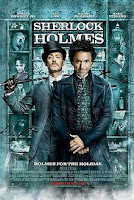I don’t get it. I just don’t. I have heard multiple people rave about the humour and hilarity of A Confederacy of Dunces by John Kennedy Toole, and I’m at a bit of a loss. Those who like this book like it a lot, but all I can say about it is “menhhh…”
Where to begin? With the tale itself? Alright. A Confederacy of Dunces tells the story of Ignatius J. Reilly, a 30-something momma’s boy who still lives at home, has never worked an honest day in his life, and who lives in his own world (in which everyone else just takes up space). Ignatius is well educated and intelligent, but because of this, he is unable to hold down steady employment as he considers himself to good for a regular job. Rather, Ignatius is in the process of writing an opus on the state of society, but only at a rate of six paragraphs a month. When we meet Ignatius, a car accident leads his mother to force him to find gainful employment, something Ignatius cannot fathom as a viable option. The book follows Ignatius’ half-hearted efforts to make his way in the world.
While Ignatius is the main character, A Confederacy of Dunces follows the live of several other characters that intersect with him. His mother, a long-suffering woman who is living her life more accidentally than with purpose; Patrolman Mancuso who tries to arrest Ignatius for being shifty, but ends up the butt of the precinct’s jokes; Myrna, Ignatius’ platonic girlfriend and a sexual radical; the Levys, Ignatius’s one-time employers whom he opens to a liability suit by calling a client of theirs a mongoloid; and the employees of the Night of Joy, a dive-bar that Ignatius and his mother once frequented, all make up part of Toole’s landscape. Each character is rich and dynamic, but somehow fall flat in the greater scheme of things.
Now, I like to consider myself as intelligent, but I couldn’t help feeling, halfway through this book, that I wasn’t smart enough to understand it. I did not find it laugh-out-loud funny like many people claim; I did not find any of the characters particular endearing; and I did not feel compelled to keep reading. (This appears in one of my reading challenges – that’s why I finished it.)
I decided in the end that it’s not that I’m not smart enough to get it, it’s that I don’t necessarily consider myself to be ‘clever’ enough. I recognize the passages that have layers of humour, but I just don’t think of them as funny. Case in point: we learn that upon the death of Ignatius’ dog, he stage a funeral for it at which the local priest refused to preside, causing Ignatius to break from the Church. At play are the imagery of a dog’s well-attended funeral, the character-flaws of Ignatius, and the audacity of breaking with your religion because it would not accept your personal beliefs. Fine. It could be funny. But only in that ‘I’m so clever that I get and appreciate all he subtle nuances of the situation’ kind of way. Not my cup of tea. (And, please remember this is MY opinion. If you have a different one, please feel free to start and write your own blog.) I can (and do) recognize the brilliance of Toole’s writing style, but the plot and point of the book are lost on me.
So, what’s my final verdict? Again, all I got is “menhhh…” It’s not the worst book I’ve ever read, but I didn’t find it all that great either. I’m thinking that I might re-read it in a couple of years and see if my point of view and opinion change. I have heard that A Confederacy of Dunces benefits from multiple readings. I guess what I’m saying is give it a try, but don’t say I forced it on it. (Wow, it’s a real comment on how I feel if that’s the overall impression I want to leave you with, isn’t it? Yikes.)









